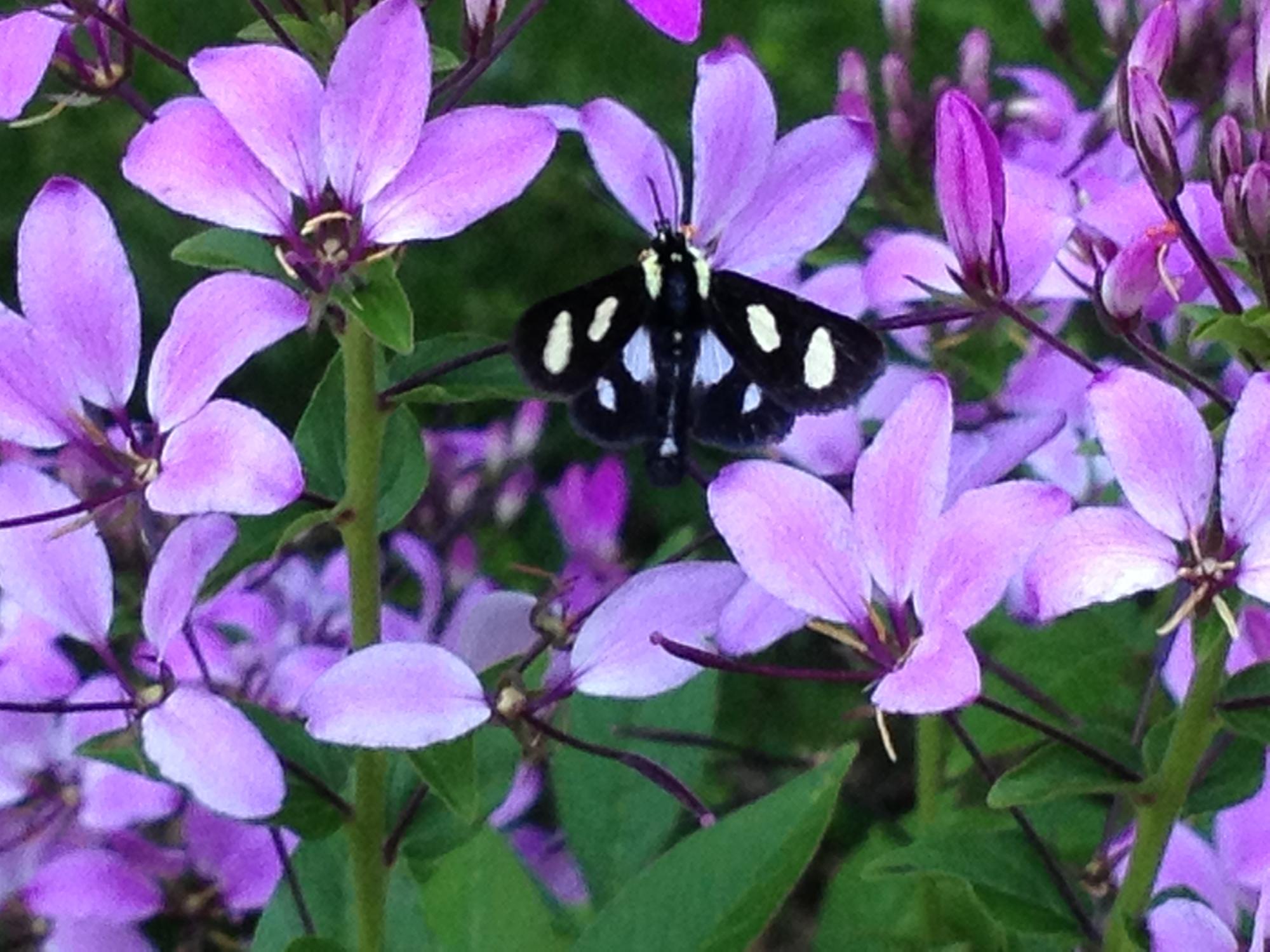miscellaneous black-and-white moths
Eight-spotted Forester moth. This is a common day-flying species, typically found from April through July. Eight-spotted Foresters are very fond of flowers, and they often nectar alongside butterflies. They will also come to black lights.
Eight-spotted Forester moths have red "leg-warmers" (a feature which distinguishes them from the look-alike White-spotted Sable moth, not shown).
White-striped Black Moth. These are common day-flying moths, frequently found in woodlands. They fly from late April through August.

Grapevine Epimenis moth. These woodland moths fly for only a few weeks in spring (typically April and early May). They can be quite numerous for a few weeks, but then they disappear.
Spotted Thyris Moth. This day-flying moth is somewhat uncommon in our area. I found this individual nectaring on a flower at Cedar Bog on July 18, 2021.
This Grapevine Epimenis moth was staring curiously at my camera. I often see these moths puddling at damp soil along forest paths.
Eight-spotted Forester moth nectaring on cleome flowers.
Another Grapevine Epimenis moth. This species is common at Sugarcreek Reserve in Bellbrook, and also at Cox Arboretum and Germantown MetroPark.
Grapevine Epimenis moths will come to black lights at night, as well as flying during the day. This one was at my moth lights.